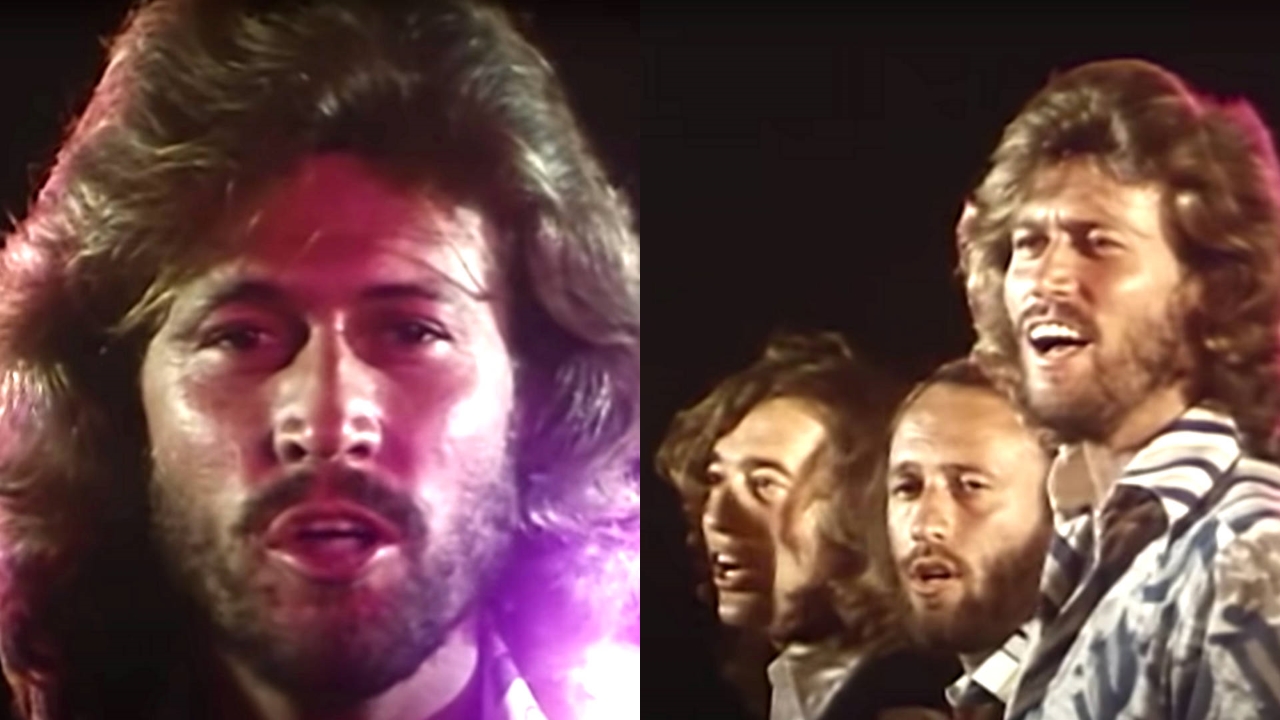🌌 A Soft Whisper Amid the Disco Storm
In 1977, disco was exploding. Clubs pulsed with energy. Sequins sparkled. And in the middle of it all, the Bee Gees were the kings of the rhythm—Stayin’ Alive, Night Fever, Jive Talkin’. But then came a song that didn’t fit the mold. A song too gentle, too tender, too pure for the flashing lights.
That song was “How Deep Is Your Love.”
It was the quiet heartbeat beneath the fever. And it became a timeless anthem—not just of romance, but of vulnerability.

🛋️ A Song Born in a Studio Couch Corner
The song was written by Barry, Robin, and Maurice Gibb, along with their long-time collaborator Blue Weaver, while working on the Saturday Night Fever soundtrack.
And here’s what’s surprising:
The demo was so stripped-down and raw that no one expected it to become one of the most beloved love songs of all time.
Barry Gibb later revealed:
“We were just sitting around, playing chords. It started from a place of simplicity, not some grand moment.”
They weren’t even sure it would fit the soundtrack at first. But when they played it back, something clicked.
🎼 The Song the Bee Gees Didn’t Sing Alone At First
Few people know this, but the Bee Gees originally intended “How Deep Is Your Love” for an American singer named Yvonne Elliman, who had worked with them. She later recorded “If I Can’t Have You” instead (another hit).
But once Barry sang the demo, the producers of Saturday Night Fever insisted the Bee Gees keep it for themselves.
It was the right call.
Because no one could deliver that harmony, that blend of ache and sweetness, like the brothers Gibb.
🎹 Lyrics That Feel Like a Conversation
The brilliance of “How Deep Is Your Love” is its honesty.
“I believe in you, you know the door to my very soul.”
It doesn’t scream affection. It doesn’t dramatize longing. It asks quietly, sincerely, and almost fearfully:
“How deep is your love?”
It’s not a declaration—it’s a question.
And that’s what makes it resonate. Because we’ve all been there: unsure, exposed, hoping the other person feels as deeply as we do.
📀 The Stats Were Massive—But That’s Not the Point
-
Released in September 1977
-
Spent 17 weeks on the Billboard Hot 100
-
Reached #1 in the US
-
Won Grammy Award for Best Pop Vocal Performance by a Group
But numbers don’t capture why this song still plays at weddings, why it still lives in films, or why it still makes people cry in quiet car rides.
It’s because this was disco’s beating heart. The love song amidst the noise.
🧠 Interesting Fact: Key Changes and Hidden Genius
Musically, “How Deep Is Your Love” uses key transitions that are almost imperceptible. Barry Gibb’s falsetto floats so seamlessly between them that even trained musicians are surprised when analyzing it.
This subtle complexity is why the song feels simple, but never boring. It glides instead of walks. It breathes.
💬 Barry’s Whisper Still Echoes
Barry Gibb once said:
“We never tried to write hits. We tried to write something that would move us. ‘How Deep Is Your Love’ moved us. That’s how we knew it mattered.”
And it mattered more than they knew.
In 1996, Take That covered it and brought it to a new generation—taking it again to #1 in the UK.
Even now, singers across genres—from R&B to acoustic folk—return to it, like visiting an old letter you once wrote to someone you loved.
🕯️ After Robin and Maurice Passed
Following the deaths of Maurice (2003) and Robin (2012), Barry became the last surviving Bee Gee. And during tribute performances of “How Deep Is Your Love,” his voice would sometimes break—not from age, but from grief.
Because the harmonies were always written for three.
And now only one remained.
Yet the song still lives—on radio, in hearts, and in whispered “I love you’s” across the world.
🎵 Song Highlight
“How Deep Is Your Love” – Bee Gees
-
Release date: September 1977
-
Writers: Barry, Robin & Maurice Gibb, Blue Weaver
-
Genre: Soft rock, R&B
-
Theme: Vulnerability, trust, emotional connection
-
Legacy: One of the most covered love songs of the 20th century. Ranked in Rolling Stone’s “500 Greatest Songs of All Time.”